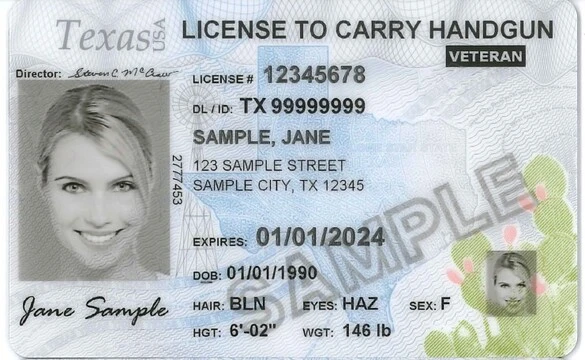Texas has a storied history with firearms and is known for having some of the most permissive gun laws in the United States. Understanding current Texas gun laws is crucial for residents and visitors to ensure compliance and promote safety.
Key Legislative Changes
Texas gun laws have seen many changes in recent years. The most substantive changes are here below.
HB 1927 (Permitless Carry Law)
House Bill 1927, effective September 1, 2021, allows Texans to carry handguns openly or concealed without a permit. This law, known as "constitutional carry," significantly changes the previous requirements for carrying handguns in Texas (Texas Penal Code § 46.02).
Other Recent Legislative Updates
- House Bill 2837: Prevents financial institutions from requiring specific merchant category codes for gun-related transactions.
- House Bill 1760: Limits gun-free zones to properties owned or controlled by schools.
- House Bill 3137: Prohibits counties and municipalities from requiring gun owners to purchase liability insurance.
Who Can Carry a Gun in Texas?
There are restrictions to carry in the current Texas gun laws.
General Eligibility
To carry a handgun in public without a License to Carry (LTC), an individual must meet the following criteria (Texas Penal Code §§ 46.02, 46.04):
- Be at least 21 years old (some exceptions apply for military personnel).
- Not have a prior felony conviction.
- Not have a recent conviction for certain types of misdemeanors.
- Not be subject to an unexpired protective order.
- Not be prohibited from possessing a firearm under federal law (18 U.S. Code § 922(g)).
- Not be intoxicated.
Restrictions on Certain Individuals
Individuals with specific criminal backgrounds, mental health issues, or active protective orders are prohibited from carrying firearms under current Texas gun laws, even under the permitless carry law (Texas Penal Code § 46.04).
How to Legally Carry a Gun in Texas
Texas gun laws are clear on some things, but unclear (permissive) on others. Following the law in Texas is not difficult.
Handguns
Handguns must be carried in a holster, whether carried openly or concealed (Texas Penal Code § 46.02). Texas gun laws do not specify the type of holster required.
Long Guns
Texas law does not specifically restrict how long guns (rifles and shotguns) can be carried. However, displaying a firearm in a manner intended to cause alarm is considered disorderly conduct (Texas Penal Code § 42.01).
In Vehicles
Handguns in vehicles must be holstered or, if not holstered, stored in a case, closed glove box, or lockable console (Texas Penal Code § 46.02).
License to Carry (LTC)
Overview of LTC
Although permitless carry is now legal, many Texans still obtain an LTC for various benefits, including legal knowledge, ability to carry in other states, and ease of interactions with law enforcement (Texas Government Code § 411.172).
Process to Obtain an LTC
To obtain an LTC, applicants must complete a training course, pass a written exam, and demonstrate shooting proficiency. The application process also involves a background check and fingerprint submission (Texas Government Code § 411.188).
Reciprocity with Other States
Texas has reciprocity agreements with several states, allowing LTC holders to carry firearms in those states under certain conditions (Texas Government Code § 411.173).
Places Where Guns Are Prohibited in Texas Gun Laws
General Prohibited Areas
Firearms are prohibited in the following locations (Texas Penal Code § 46.03):
- Secured areas of airports
- Courthouses
- Polling places on voting days
- Schools and school activities
- Businesses with visible signage prohibiting handguns
- Businesses deriving 51% or more of their income from alcohol sales
- Correctional facilities
- Hospitals, nursing homes, and mental hospitals
- Amusement parks
- Government buildings and rooms where governmental meetings are held
Private Property Rules
Property owners can choose to prohibit firearms on their premises by posting appropriate signage (Texas Penal Code §§ 30.05, 30.06, and 30.07).
Specific Prohibited Locations
- Schools and educational institutions (Texas Penal Code § 46.03)
- Businesses with alcohol sales (Texas Alcoholic Beverage Code § 11.61)
- Hospitals and mental health facilities (Texas Penal Code § 46.035)
- Government buildings and meetings (Texas Penal Code § 46.03)
Open Carry vs. Concealed Carry
Definitions and Differences
Open carry refers to carrying a firearm visibly in a holster, while concealed carry means carrying a firearm in a manner that is not visible to others. Both require the firearm to be in a holster (Texas Penal Code § 46.02).
Legal Requirements and Restrictions
Open carry and concealed carry have similar legal requirements, with specific locations where carrying firearms is prohibited (Texas Penal Code § 46.03).
Legal Responsibilities and Consequences
Disorderly Conduct
Displaying a firearm in a manner intended to cause alarm is considered disorderly conduct, which is a criminal offense (Texas Penal Code § 42.01).
Unlawful Carry and Possession
Carrying a firearm unlawfully can result in penalties, including misdemeanors and felonies, depending on the circumstances (Texas Penal Code § 46.02).
Self-Defense Laws
Texas recognizes the Castle Doctrine and Stand Your Ground laws, allowing individuals to use deadly force to protect themselves in specific situations (Texas Penal Code § 9.32).
Conclusion
Understanding Texas gun laws is crucial for responsible gun ownership. While Texas allows permitless carry, knowing where and how you can carry firearms legally is essential to avoid potential legal issues. Whether you choose to carry with or without an LTC, staying informed and educated about the laws will ensure you are a responsible and law-abiding gun owner.




